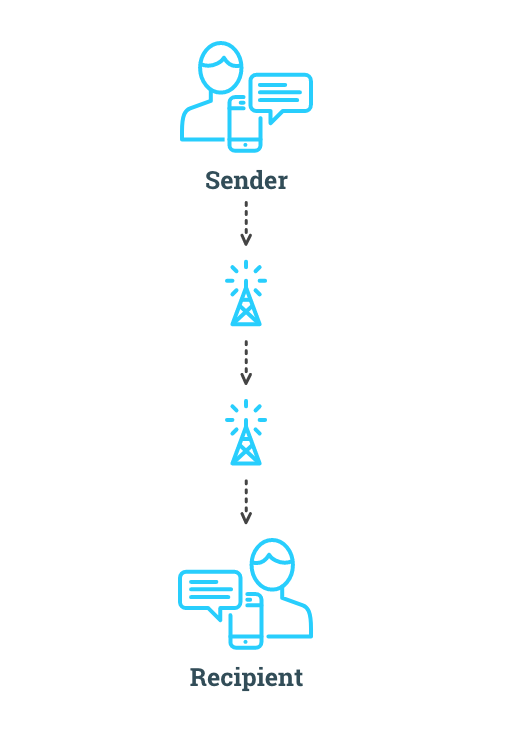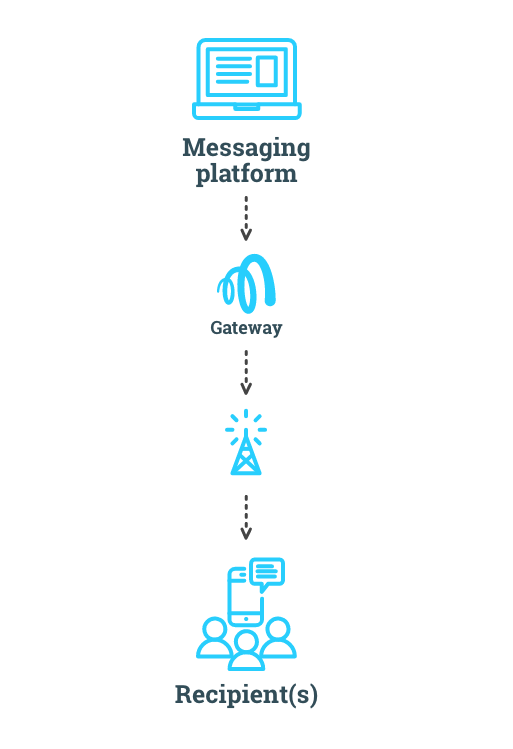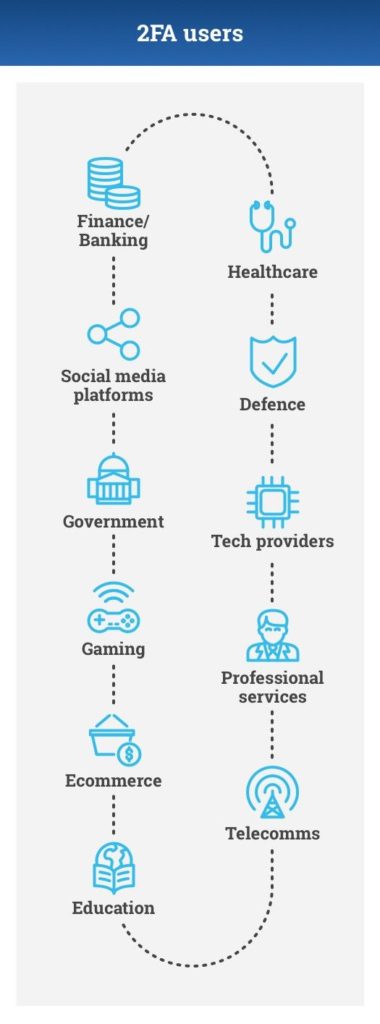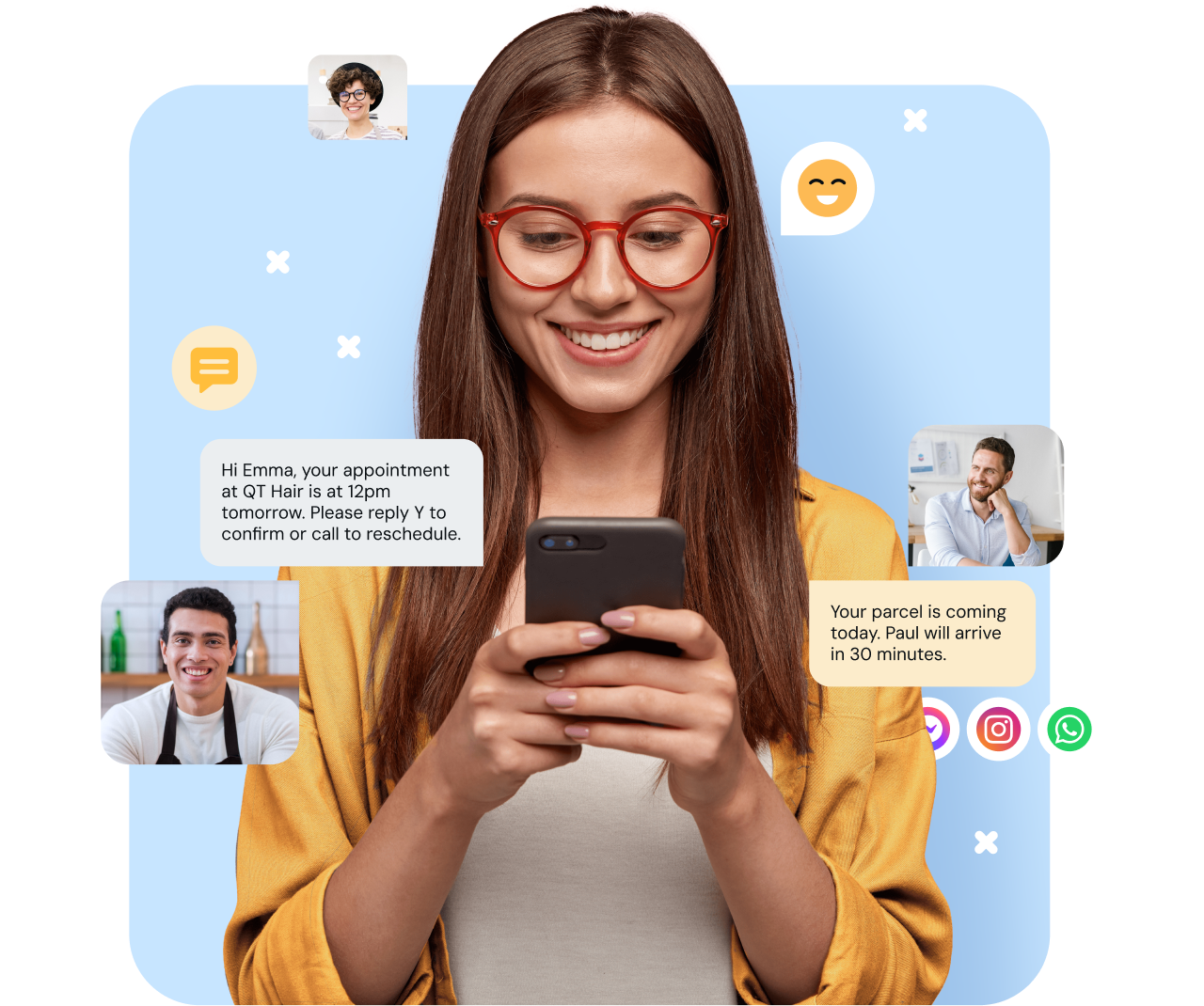Share article:
What is SMS, and how does it work?

What is SMS? What’s the difference to MMS and RCS? And is SMS still relevant? In this overview, we’ll answer the most important questions around SMS.
SMS has been around for 32 years, since Neil Papworth, an engineer for the Sema Group sent out the very first SMS message on December 3 in 1992. Since that very first text, saying “Merry Christmas”, SMS has remained a key way to communicate.
According to Forbes, people send 23 billion text messages each day. That’s 270,000 messages every second. Businesses have also seen a steady growth in revenue through SMS.
All of this goes to show that SMS communication is still going strong. So, let’s explore what SMS is and how it works.
What is SMS?
SMS, also commonly known as text messaging, stands for short messaging service. The SMS protocol allows sending text messages of up to 160 characters between mobile phones.
DID YOU KNOW: SMS messages use communication protocols that were standardized in 1985 by the Global System for Mobile Communications (GSM). In the GSM system, an SMS message is limited to 160 characters. Learn more about GSM character types and message lengths.
When adding special characters or emojis, the character limit drops to 70. Similarly, in some languages like Japanese or Arabic that don’t use the classic GSM 7-bit character set-up, but UTF-16, the maximum number of characters is 70.
SMS also supports multimedia messaging service (MMS) for sending multimedia files like images, audio clips or low-resolution videos.
How do SMS messages work?
SMS are not sent directly from one end user to another. They run through a short message service center.
The process is slightly different for private users and businesses.
If you’re sending a message from your phone to a mate’s phone, you’ll just use your mobile phone network. Businesses, on the other hand, use a gateway or SMS provider like Sinch MessageMedia to send huge volumes of messages out to customers.
Sending messages between private users
Here’s what happens (in very simple terms) when you type out a message to a friend on your phone. When you hit ‘send’, your mobile phone carrier uses the GSM system to convert the message and the recipient’s mobile phone number into data sent to the nearest mobile phone tower.
From there, it’s routed to the tower closest to the recipient, where the data lands on your friend’s phone, unscrambled as your message.

Sending SMS as a business
While the carrier network works well for single messages, it’s not as effective for businesses that want to send out bulk SMS messages to all their customers. Enter the gateway.
Gateway technology solves the challenge of sending messages out to thousands of customers in one go, quickly and reliably. A gateway is an online platform or engine that can rapidly intake and direct huge volumes of SMS in a short amount of time – making it ideal for businesses that send bulk SMS.

For example, Sinch MessageMedia’s gateway can process over 10,000 events per second and deliver 95% of messages within two seconds.
Get more out of text messaging
Start a 14-day free trial with Sinch MessageMedia and take your business SMS to the next level.

Is SMS secure?
As mentioned, text messages are not sent directly from sender to recipient, but go through a messaging service first. This means that SMS doesn’t offer the more secure end-to-end encryption.
That’s why, especially in business messaging, you want to add an extra layer of security with two-factor authentication (2FA). Through 2FA, you can send one time passwords to users’ phones to verify their identities and to ensure that they have the right to access a service.

What is SMS, and what’s the difference to RCS and messaging apps?
SMS, RCS, and messaging apps are often mentioned together, but they’re not the same thing.
What is SMS: SMS vs. RCS
RCS stands for rich communication service. It’s a technology supported by Android devices that makes the messaging experience “richer” by enabling engaging multimedia features like videos and images.
Unlike SMS, RCS runs through Wi-Fi or mobile data. All new Android phones are RCS enabled, but the technology hasn’t been rolled out globally yet. RCS also doesn’t work with iPhones, but Apple announced that they’ll start supporting RCS in 2024. This interoperability could definitely boost the use of RCS.
What is SMS: SMS vs. messaging apps
Unlike SMS and RCS that exist as a native app on your mobile phone, messaging apps are third-party apps that users have to install first in order to send messages through them. Some of the most popular messaging apps are WhatsApp, Facebook Messenger, iMessage, and Telegram.
In the past years, messaging apps have become hugely popular.
People have taken to messaging apps because they offer an easy way to communicate across different devices (no issues between iPhones and Android phones anymore), because it’s easy to send and receive multimedia files, and because in some regions, it’s cheaper to have a data plan on your phone than to send text messages.
Is SMS still relevant?
With all these new mobile messaging options on the rise, some people might wonder if the SMS is still relevant.
The short answer is: yes!
For starters, SMS still offers the broadest reach. Everyone that has a mobile phone can receive a text message. It doesn’t require a special app or even a data plan.
SMS is also the fallback in case another type of message doesn’t go through. For example, if someone sends an iMessage from an iPhone to an Android phone, it shows up as an SMS. The same happens if you send an RCS message to a phone that doesn’t have RCS enabled. Even when you use WhatsApp for sending one-time passwords, it’ll use SMS as a fallback if the code doesn’t go through.
SMS is also the base for the Advanced Mobile Location (AML) service. AML is used when making an emergency call from a phone. In some regions, like the European Union, it’s required by law that all cell phones have to have AML enabled. Other countries are following this model.
With its universal reach and unique functions, it’s pretty safe to say that SMS isn’t going anywhere anytime soon!
Get started with business texting now

SMS is limited in that it cannot use images, and the length of a standard message is limited to 160 characters.
For example, WhatsApp, Instagram DMs, Meta Messenger, and Google Business Messages are all examples of OTT messaging.
These are in contrast to technologies like SMS messaging which send messages through mobile data carriers like Verizon or AT&T.
For example, OTT messaging through apps like WhatsApp, Facebook Messenger, or Instagram can accomplish the same goals as SMS. Instead of using mobile data carriers, OTT messaging can be achieved entirely through the internet.
Either way, sending thousands of SMS through the phone isn’t practical and it also doesn’t let you manage messages centrally or gather data. It also doesn’t come with the extra safety layer of 2FA. That’s why businesses use SMS providers like Sinch MessageMedia.
